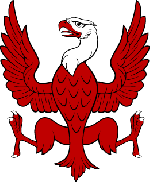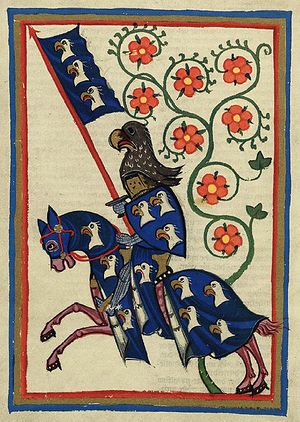Eagle: Difference between revisions
m (→Heraldry) |
m (→Heraldry: Fixed Frederick Barbarossa link) |
||
| Line 13: | Line 13: | ||
The eagle was the symbol of Imperial [[Rome]], and appeared on a lot of royal [[heraldry]] in Central and Eastern Europe, much as the [[lion]] was used in Western Europe. [[ |
The eagle was the symbol of Imperial [[Rome]], and appeared on a lot of royal [[heraldry]] in Central and Eastern Europe, much as the [[lion]] was used in Western Europe. [[Frederick Barbarossa]] adopted the Eagle as the symbol of the [[Holy Roman Empire]], inspired by it's association with Imperial Rome. |
||
It is normally blazoned [[displayed]], having its wings spread and its head to the side. |
It is normally blazoned [[displayed]], having its wings spread and its head to the side. |
||
Latest revision as of 13:08, 28 July 2011
The eagle is a large bird of prey, known for large wingspan and keen eyesight. The golden eagle is found in Europe, Asia and North America. Various sea-eagles are also found in Europe. Eagles were used by the upper nobility for falconry.
Symbolism
The eagle was also commonly used as the Christian symbol for St John the Evangelist, one of Jesus Christ's disciples. This can be seen in many locations, including stained-glass windows and illuminated manuscripts like the Book of Hours or the Book of Kells.
The eagle also appears in astronomy as the constellation Aquila.
Heraldry
The eagle was the symbol of Imperial Rome, and appeared on a lot of royal heraldry in Central and Eastern Europe, much as the lion was used in Western Europe. Frederick Barbarossa adopted the Eagle as the symbol of the Holy Roman Empire, inspired by it's association with Imperial Rome.
It is normally blazoned displayed, having its wings spread and its head to the side.
See Also
External Links
- Eagle on Wikipedia

